-
 Bitcoin
Bitcoin $108,641.9143
0.44% -
 Ethereum
Ethereum $2,539.5956
0.97% -
 Tether USDt
Tether USDt $1.0007
0.04% -
 XRP
XRP $2.2777
2.50% -
 BNB
BNB $660.2073
0.79% -
 Solana
Solana $151.1059
2.08% -
 USDC
USDC $1.0004
0.05% -
 TRON
TRON $0.2838
-0.03% -
 Dogecoin
Dogecoin $0.1698
3.57% -
 Cardano
Cardano $0.5835
1.74% -
 Hyperliquid
Hyperliquid $39.4787
0.07% -
 Sui
Sui $2.9330
1.09% -
 Bitcoin Cash
Bitcoin Cash $489.1023
1.31% -
 Chainlink
Chainlink $13.3775
1.61% -
 UNUS SED LEO
UNUS SED LEO $9.0201
-0.04% -
 Avalanche
Avalanche $18.2176
2.06% -
 Stellar
Stellar $0.2417
1.98% -
 Toncoin
Toncoin $2.9355
7.33% -
 Shiba Inu
Shiba Inu $0.0...01181
3.23% -
 Litecoin
Litecoin $87.9775
1.54% -
 Hedera
Hedera $0.1569
1.54% -
 Monero
Monero $316.0995
1.13% -
 Polkadot
Polkadot $3.3970
1.36% -
 Dai
Dai $1.0002
0.02% -
 Ethena USDe
Ethena USDe $1.0002
0.00% -
 Bitget Token
Bitget Token $4.4094
0.33% -
 Uniswap
Uniswap $7.4035
6.32% -
 Pepe
Pepe $0.0...01016
4.88% -
 Aave
Aave $275.5935
1.55% -
 Pi
Pi $0.4565
-0.89%
What is the difference between a market order and a limit order on Bitfinex?
On Bitfinex, market orders execute instantly at the best available price, while limit orders let you set a specific price, offering more control but risking non-execution.
Apr 14, 2025 at 01:49 pm
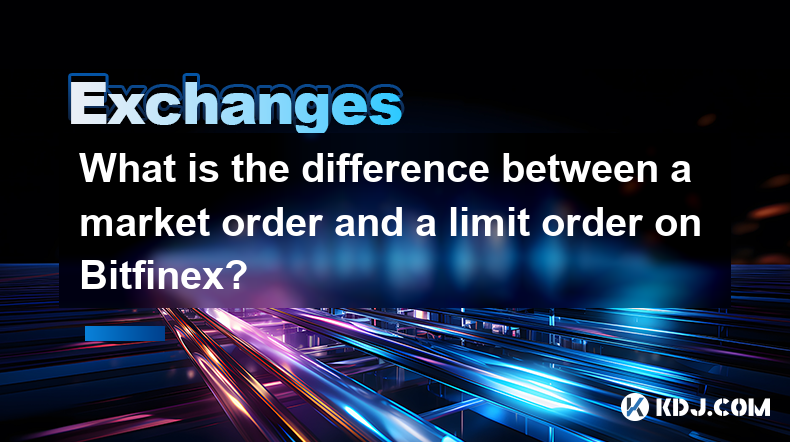
When trading on Bitfinex, understanding the difference between a market order and a limit order is crucial for executing your trades effectively. A market order is an order to buy or sell a cryptocurrency at the current best available market price. This type of order is executed immediately, ensuring that your trade is completed as soon as possible. On the other hand, a limit order allows you to set a specific price at which you want to buy or sell a cryptocurrency. This order will only be executed if the market reaches your specified price, giving you more control over the price at which your trade is completed.
How Market Orders Work on Bitfinex
When you place a market order on Bitfinex, you are essentially telling the platform to execute your trade at the best available price in the market at that moment. Here’s how you can place a market order on Bitfinex:
- Navigate to the trading section of Bitfinex and select the cryptocurrency pair you want to trade.
- Click on the "Market" tab to indicate that you want to place a market order.
- Enter the amount of cryptocurrency you wish to buy or sell.
- Click on the "Buy" or "Sell" button to execute the order immediately.
Market orders are ideal for traders who prioritize speed and want to ensure their trades are executed quickly. However, the trade-off is that you have less control over the exact price at which your order is filled, which can sometimes lead to slippage, especially in volatile markets.
How Limit Orders Work on Bitfinex
A limit order on Bitfinex allows you to set a specific price at which you are willing to buy or sell a cryptocurrency. Here’s how you can place a limit order on Bitfinex:
- Go to the trading section and choose your desired cryptocurrency pair.
- Click on the "Limit" tab to indicate that you want to place a limit order.
- Enter the price at which you want to buy or sell the cryptocurrency.
- Specify the amount of cryptocurrency you want to trade.
- Click on the "Buy" or "Sell" button to submit your order.
Limit orders give you more control over the price at which your trade is executed. They are useful for traders who are willing to wait for the market to reach their desired price. However, there is a risk that your order may not be filled if the market does not reach your specified price.
Advantages and Disadvantages of Market Orders
Market orders have several advantages and disadvantages that traders should consider before using them. One of the main advantages is the speed of execution. Market orders are filled almost instantly, which is beneficial in fast-moving markets where prices can change rapidly. Another advantage is that market orders are guaranteed to be executed, as long as there is enough liquidity in the market.
However, there are also some disadvantages to market orders. The primary disadvantage is the potential for slippage. Slippage occurs when the price at which your order is executed is different from the price you expected, which can happen in volatile markets. Additionally, market orders can be less cost-effective if the spread between the bid and ask prices is wide, as you may end up paying more than you anticipated.
Advantages and Disadvantages of Limit Orders
Limit orders also come with their own set of advantages and disadvantages. One of the main advantages is price control. By setting a specific price, you can ensure that your trade is only executed at a price that you are comfortable with. This can be particularly useful for traders who have a specific price target in mind.
Another advantage of limit orders is the potential for better pricing. If the market moves in your favor and reaches your specified price, you may be able to buy or sell at a better price than if you had used a market order. However, the main disadvantage of limit orders is the risk of non-execution. If the market does not reach your specified price, your order will not be filled, and you may miss out on potential trading opportunities.
Choosing Between Market and Limit Orders
Choosing between a market order and a limit order on Bitfinex depends on your trading strategy and priorities. If speed and immediate execution are your primary concerns, a market order may be the better choice. Market orders are suitable for traders who want to enter or exit a position quickly, especially in fast-moving markets.
On the other hand, if price control and the potential for better pricing are more important to you, a limit order may be more appropriate. Limit orders are ideal for traders who have a specific price target in mind and are willing to wait for the market to reach that price. They are also useful for traders who want to avoid the potential for slippage and want more control over their trading costs.
Practical Examples of Market and Limit Orders
To illustrate the difference between market and limit orders, let’s look at some practical examples. Suppose you want to buy Bitcoin (BTC) on Bitfinex. The current market price of BTC is $30,000.
- Market Order Example: You place a market order to buy 1 BTC. The order is executed immediately at the best available price, which might be $30,005 due to the bid-ask spread. You end up paying $30,005 for 1 BTC.
- Limit Order Example: You place a limit order to buy 1 BTC at $29,900. The order will only be executed if the market price of BTC reaches $29,900 or lower. If the market price drops to $29,900, your order is filled, and you buy 1 BTC at $29,900. If the market price never reaches $29,900, your order remains unfilled.
These examples highlight the key differences between market and limit orders. Market orders provide immediate execution but may result in higher costs due to slippage, while limit orders offer price control but carry the risk of non-execution.
Frequently Asked Questions
Q: Can I cancel a market order on Bitfinex after it has been placed?
A: No, once a market order is placed on Bitfinex, it is executed immediately and cannot be canceled. If you need more control over your order, consider using a limit order instead.
Q: How does Bitfinex handle partial fills for limit orders?
A: Bitfinex allows for partial fills on limit orders. If your limit order is larger than the available liquidity at your specified price, it may be partially filled. The remaining portion of your order will stay active until it is either fully filled or canceled.
Q: Are there any fees associated with market and limit orders on Bitfinex?
A: Yes, Bitfinex charges fees for both market and limit orders. The fee structure depends on your trading volume and whether you are a maker or a taker. Market orders are typically considered taker orders and may incur higher fees than limit orders, which are often considered maker orders.
Q: Can I use stop orders on Bitfinex, and how do they differ from market and limit orders?
A: Yes, Bitfinex supports stop orders, which are used to limit losses or protect profits. A stop order becomes a market order once the stop price is reached, while a stop-limit order becomes a limit order at the specified price. Stop orders differ from market and limit orders in that they are triggered by a specific price level rather than being immediately executed or waiting for a specific price to be reached.
Disclaimer:info@kdj.com
The information provided is not trading advice. kdj.com does not assume any responsibility for any investments made based on the information provided in this article. Cryptocurrencies are highly volatile and it is highly recommended that you invest with caution after thorough research!
If you believe that the content used on this website infringes your copyright, please contact us immediately (info@kdj.com) and we will delete it promptly.
- Litecoin Breakout Watch: What Traders Need to Know Now
- 2025-07-06 16:50:13
- Bitcoin, Solana, Ethereum: Decoding the Latest Buzz on the Blockchain
- 2025-07-06 16:50:13
- Widnes Resident's 50p Could Be Your Ticket to Easy Street: Rare Coin Mania!
- 2025-07-06 16:55:13
- Bitcoin, Solaris Presale, and Token Rewards: What's the Buzz?
- 2025-07-06 16:55:13
- Ethereum Under Pressure: Price Drop Amid Global Uncertainties
- 2025-07-06 17:00:13
- XRP, SEC Case, and Prosperity: A New Era for XRP Holders?
- 2025-07-06 17:10:13
Related knowledge
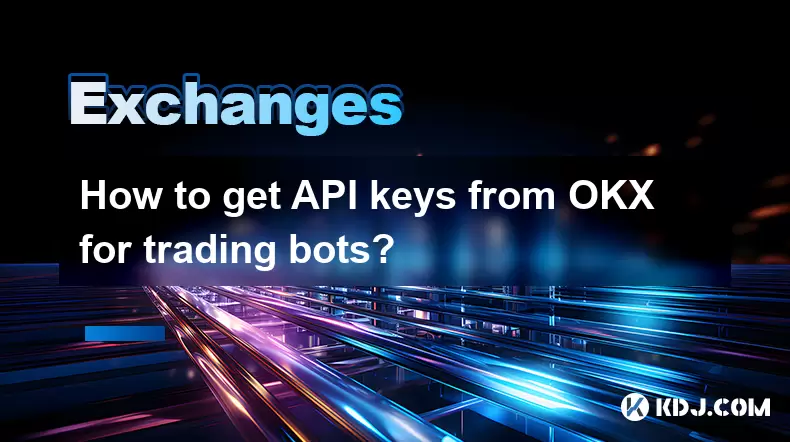
How to get API keys from OKX for trading bots?
Jul 03,2025 at 07:07am
Understanding API Keys on OKXTo interact with the OKX exchange programmatically, especially for building or running trading bots, you need to obtain an API key. An API (Application Programming Interface) key acts as a secure token that allows your bot to communicate with the exchange's servers. On OKX, these keys come with customizable permissions such ...
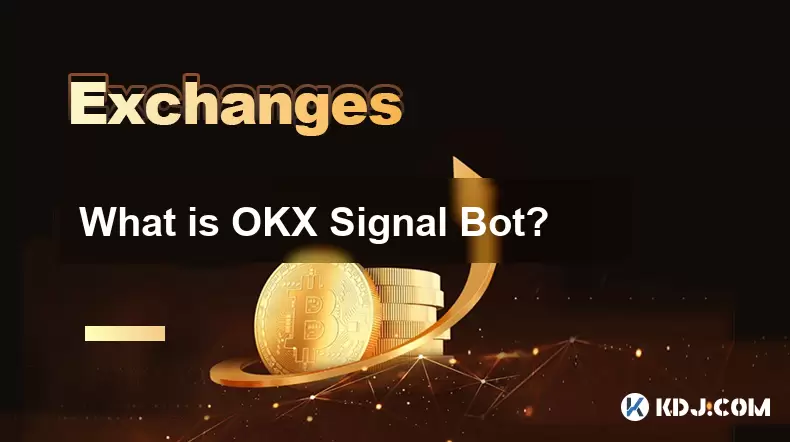
What is OKX Signal Bot?
Jul 02,2025 at 11:01pm
Understanding the Basics of OKX Signal BotThe OKX Signal Bot is a feature within the OKX ecosystem that provides users with automated trading signals and execution capabilities. Designed for both novice and experienced traders, this bot helps identify potential trading opportunities by analyzing market trends, technical indicators, and historical data. ...
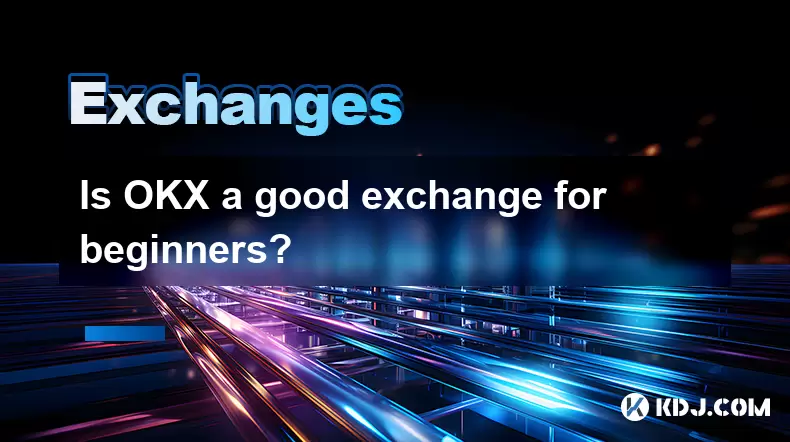
Is OKX a good exchange for beginners?
Jul 03,2025 at 05:00pm
What Is OKX and Why Is It Popular?OKX is one of the leading cryptocurrency exchanges globally, known for its robust trading infrastructure and a wide variety of digital assets available for trading. It supports over 300 cryptocurrencies, including major ones like Bitcoin (BTC), Ethereum (ETH), and Solana (SOL). The platform has gained popularity not onl...
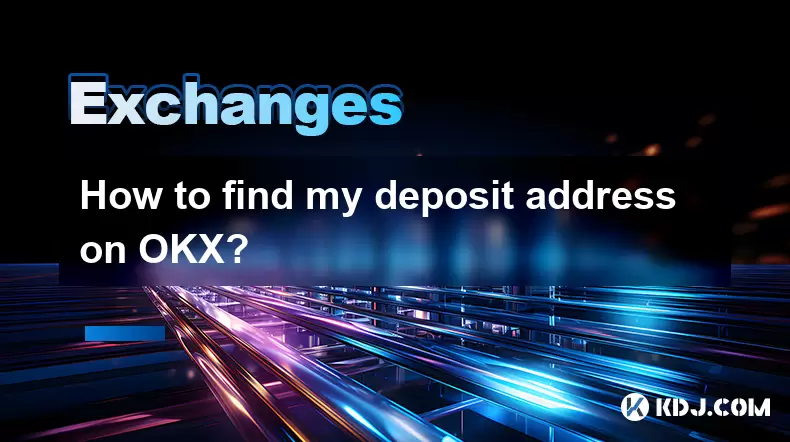
How to find my deposit address on OKX?
Jul 06,2025 at 02:28am
What is a Deposit Address on OKX?A deposit address on OKX is a unique alphanumeric identifier that allows users to receive cryptocurrencies into their OKX wallet. Each cryptocurrency has its own distinct deposit address, and using the correct one is crucial to ensure funds are received properly. If you're looking to transfer digital assets from another ...
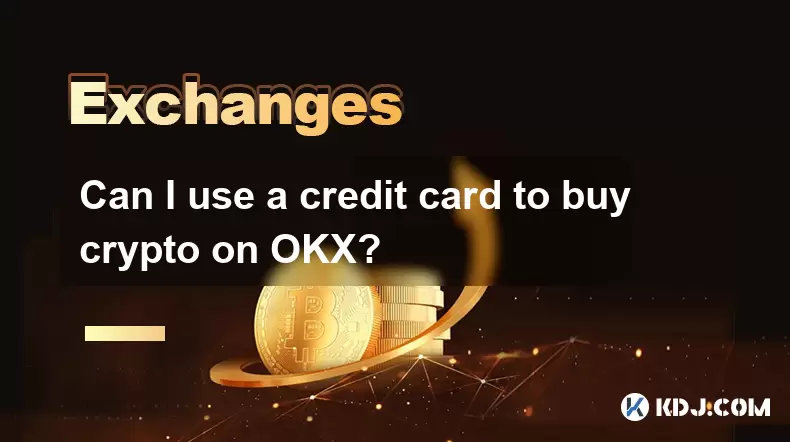
Can I use a credit card to buy crypto on OKX?
Jul 04,2025 at 04:28am
Understanding OKX and Credit Card PaymentsOKX is one of the leading cryptocurrency exchanges globally, offering a wide range of services including spot trading, derivatives, staking, and more. Users often wonder whether they can use a credit card to buy crypto on OKX, especially if they are new to the platform or looking for quick ways to enter the mark...
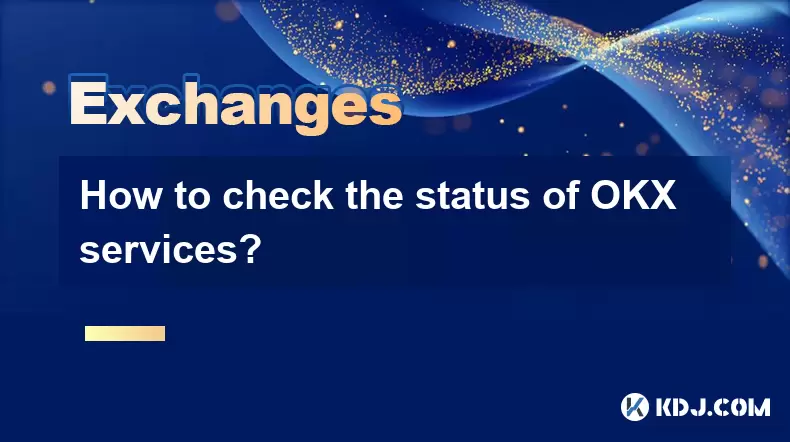
How to check the status of OKX services?
Jul 02,2025 at 11:14pm
What is OKX, and Why Checking Service Status Matters?OKX is one of the world’s leading cryptocurrency exchanges, offering services such as spot trading, futures trading, staking, and more. With millions of users relying on its platform for daily transactions, it's crucial to know how to check the status of OKX services. Downtime or maintenance can affec...

How to get API keys from OKX for trading bots?
Jul 03,2025 at 07:07am
Understanding API Keys on OKXTo interact with the OKX exchange programmatically, especially for building or running trading bots, you need to obtain an API key. An API (Application Programming Interface) key acts as a secure token that allows your bot to communicate with the exchange's servers. On OKX, these keys come with customizable permissions such ...

What is OKX Signal Bot?
Jul 02,2025 at 11:01pm
Understanding the Basics of OKX Signal BotThe OKX Signal Bot is a feature within the OKX ecosystem that provides users with automated trading signals and execution capabilities. Designed for both novice and experienced traders, this bot helps identify potential trading opportunities by analyzing market trends, technical indicators, and historical data. ...

Is OKX a good exchange for beginners?
Jul 03,2025 at 05:00pm
What Is OKX and Why Is It Popular?OKX is one of the leading cryptocurrency exchanges globally, known for its robust trading infrastructure and a wide variety of digital assets available for trading. It supports over 300 cryptocurrencies, including major ones like Bitcoin (BTC), Ethereum (ETH), and Solana (SOL). The platform has gained popularity not onl...

How to find my deposit address on OKX?
Jul 06,2025 at 02:28am
What is a Deposit Address on OKX?A deposit address on OKX is a unique alphanumeric identifier that allows users to receive cryptocurrencies into their OKX wallet. Each cryptocurrency has its own distinct deposit address, and using the correct one is crucial to ensure funds are received properly. If you're looking to transfer digital assets from another ...

Can I use a credit card to buy crypto on OKX?
Jul 04,2025 at 04:28am
Understanding OKX and Credit Card PaymentsOKX is one of the leading cryptocurrency exchanges globally, offering a wide range of services including spot trading, derivatives, staking, and more. Users often wonder whether they can use a credit card to buy crypto on OKX, especially if they are new to the platform or looking for quick ways to enter the mark...

How to check the status of OKX services?
Jul 02,2025 at 11:14pm
What is OKX, and Why Checking Service Status Matters?OKX is one of the world’s leading cryptocurrency exchanges, offering services such as spot trading, futures trading, staking, and more. With millions of users relying on its platform for daily transactions, it's crucial to know how to check the status of OKX services. Downtime or maintenance can affec...
See all articles

























































































